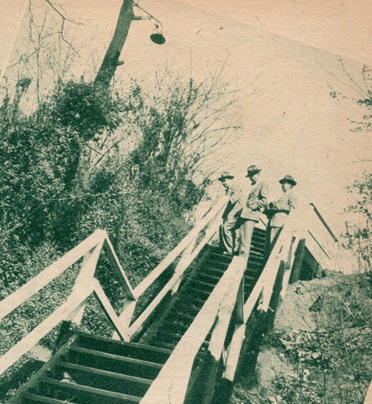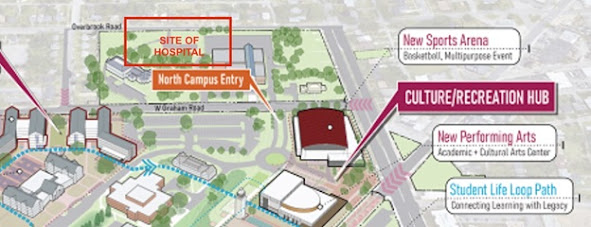VCU Libraries’ Digital Collections houses an online version of the 1978 book, “The Jackson Ward Historic District”. This resource delves into the history of the famous Richmond neighborhood, as well as its architecture through text and photographs. Digital images scanned from the original photographic prints used for the book also are available on the web page for the collection.
“The Jackson Ward Historic District” Illustrated Cover Page
“Richmond's Jackson Ward neighborhood is located on the northern edge of the downtown district. It was originally built by European immigrants attracted to and made prosperous by Richmond's status as a central retail hub. Freed slaves began moving into the neighborhood during Reconstruction, and by 1920 Jackson Ward was one of the most active and well-known centers of African-American life in the country” [Text taken from the VCU Libraries webpage].
Frequently referred to as a “Harlem of the South” and a “Black Wall Street”, Jackson Ward was a center for African-American businesses, entertainment, and activism. Tragically, after the construction of what is now a part of I-95 through the center of the neighborhood in the late 1950s, numerous buildings were destroyed and families displaced. Over time, many African American residents moved out of Jackson Ward due to desegregation and white flight creating availability in different neighborhoods. This left vacant properties to be targeted for destruction and replacement with new development projects- destroying much of the old character and charm of the district [Information summarized from VCU Libraries’ webpage]. Almost fifty years since the publication of “The Jackson Ward Historic District”, the area today has seen even more demolition and development of new projects. Various initiatives and projects–such as this resource–have been undertaken in order to promote the restoration and preservation of the area's past and importance as an African-American heritage center.
As stated in the book’s introduction, “The importance of Jackson Ward today is threefold -- first, it is important because of its role in black cultural and economic history. Secondly, it is architecturally significant because of the unusual quality of its houses. It contains a full range of housing types popular in Richmond for much of the nineteenth century, as well as containing one of the finest collections of cast iron in the nation. Thirdly, Jackson Ward is important as a residential neighborhood. Its position is on the fringe of the central business district of Virginia's capital. It is a position providing both convenience to the center city and a prominent location” [Text from “The Jackson Ward Historic District”, pg. 5].
The digitized book on the VCU Libraries webpage is exactly as it was originally printed. With text written by Robert P. Winthrop and photographs taken by John G. Zehmer, “The Jackson Ward Historic District” is divided into five chapters. The first, “The History of Jackson Ward”, summarizes the story of the neighborhood and details important organizations and individuals who were crucial to its development. The second and third chapters of the book, “The Architecture of Jackson Ward” and “Typical Houses of the Ward”, survey the prominent architectural styles to influence the area as well as the various styles of homes found there- with accompanying images as examples. Chapter four, “Approaches to Preservation”, describes the different types of structural preservation that can be utilized, as well as the various methods needed to preserve and upkeep certain features and materials on the buildings. The final chapter, “A Catalog of Notable Buildings” comprises most of the book and provides photographs and descriptions of the features and histories of homes and businesses in Jackson Ward.
“The
Jackson Ward Historic District” page for 100 Block East Leigh St.






















%20use.jpg)
%20use.jpg)

%20use.jpg)